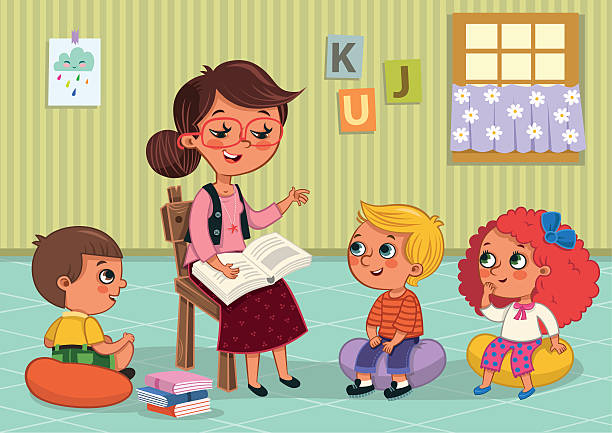
Nursery rhymes have been a cherished part of childhood for generations, and for good reason. These simple yet powerful verses play a crucial role in early language development, helping young children build the foundational skills necessary for reading success. With their catchy rhythms, repetitive patterns, and engaging storytelling, nursery rhymes make learning fun while strengthening vocabulary, phonemic awareness, and comprehension skills.
In today’s fast-paced world, where screens often replace traditional storytelling, incorporating nursery rhymes into early education remains one of the most effective ways to nurture a love for reading. Whether at home or in a childcare nursery in New Malden, children benefit greatly from the timeless magic of rhyme and rhythm.
The Science Behind Nursery Rhymes and Early Literacy
Research shows that children who are exposed to nursery rhymes from an early age develop stronger reading skills later in life. The combination of rhyme and rhythm helps children recognize sound patterns, which is essential for phonemic awareness—the ability to hear and manipulate individual sounds in words.
Nursery rhymes also introduce children to new vocabulary in a fun and memorable way. When young learners repeatedly hear words and phrases in rhyming sequences, they absorb language naturally, expanding their linguistic abilities without even realizing it.
How Nursery Rhymes Develop Key Reading Skills
1. Phonemic Awareness and Sound Recognition
Nursery rhymes emphasize sound patterns, making them an excellent tool for teaching phonemic awareness. When children chant “Hickory Dickory Dock” or “Twinkle, Twinkle, Little Star,” they learn to recognize different sounds within words, an essential skill for decoding words when they begin reading.
2. Vocabulary Expansion
Through nursery rhymes, children are exposed to words that might not be part of their everyday conversations. Words like “fetch,” “crown,” and “pail” from “Jack and Jill” introduce new concepts in an engaging context, enriching a child’s vocabulary.
3. Memory and Cognitive Development
Because nursery rhymes rely on repetition, they help improve memory retention. Children who recite rhymes repeatedly strengthen their recall abilities, which later aids in recognizing sight words and understanding sentence structures when they start reading books.
4. Comprehension and Storytelling Skills
Many nursery rhymes tell simple stories, helping children understand narrative structures. Rhymes like “The Itsy Bitsy Spider” or “Humpty Dumpty” introduce sequencing, cause and effect, and problem-solving—all of which are essential for reading comprehension.
5. Speech and Language Development
For children learning to speak, nursery rhymes provide an excellent way to practice pronunciation and articulation. Singing and reciting rhymes encourage clear speech patterns and fluency, helping children express themselves more confidently.
Bringing Nursery Rhymes to Life in Early Education
Interactive Storytime Sessions
A well-structured nursery program, such as those offered by nurseries in New Malden, integrates nursery rhymes into daily activities. Teachers often use props, puppets, and visual storytelling techniques to bring rhymes to life, making them more engaging and memorable.
Music and Movement Activities
Pairing nursery rhymes with dance and hand motions enhances learning. Clapping along to “Baa Baa Black Sheep” or acting out “I’m a Little Teapot” helps reinforce rhythm and coordination while strengthening language connections.
Rhyme-Based Games and Activities
Matching rhyming words, completing familiar phrases, and creating new rhymes encourage children to think creatively and play with language. These activities make reading readiness fun and interactive.
Encouraging Parents to Sing at Home
Reading and singing nursery rhymes at home reinforce learning outside the classroom. Parents who engage in daily rhyme time with their children provide a strong literacy foundation, setting them up for future reading success.
Final Thoughts
Nursery rhymes are more than just fun songs—they are powerful educational tools that lay the groundwork for strong reading skills. By introducing rhythm, repetition, and storytelling into early learning, they help children develop phonemic awareness, vocabulary, comprehension, and memory.
Whether in the classroom or at home, making nursery rhymes a part of a child’s daily routine can lead to a lifelong love for reading.
Read More :- First Words to Full Sentences: Nurturing Language Skills in Nursery School